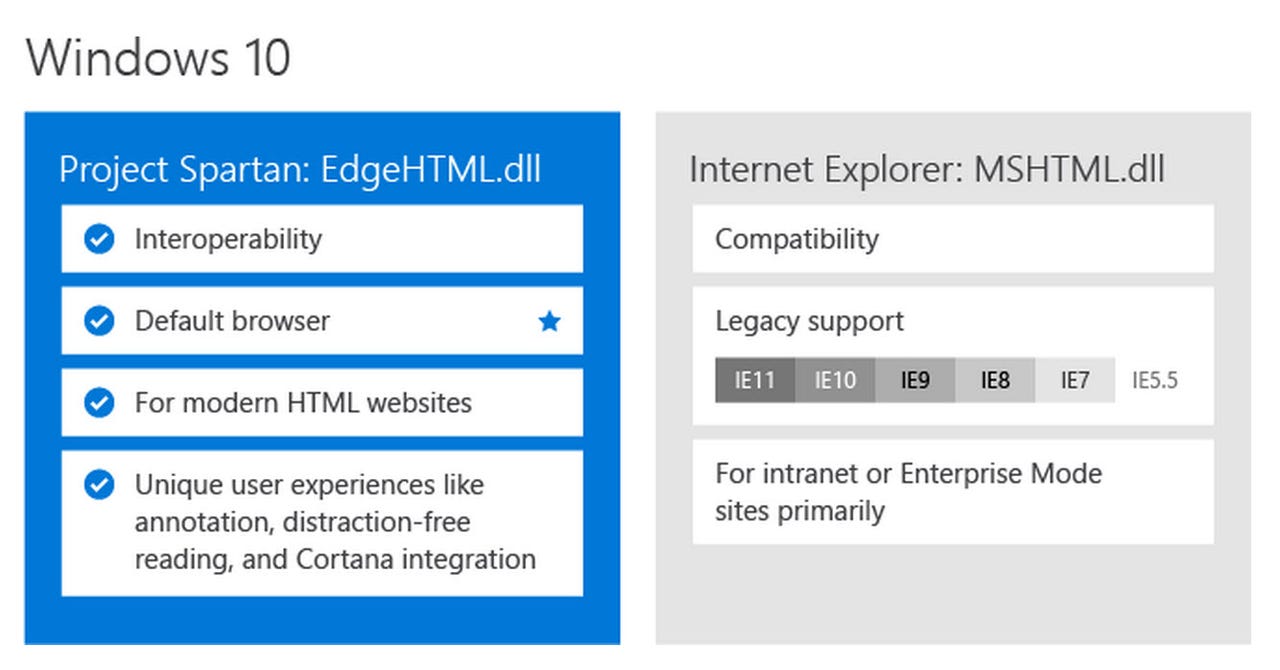Microsoft to make rendering engine changes with Spartan, IE in Windows 10

Microsoft is making some tweaks to its browser strategy for Windows 10 that center around the rendering engines for its two browsers: Internet Explorer 11 and the one codenamed "Project Spartan."

But based on feedback from Windows Insiders and customers -- who've been able to test the new Edge engine even though Spartan itself isn't yet available in publicly available test builds of Windows 10 or Windows 10 Mobile -- Microsoft is shifting gears.
Microsoft's new strategy for Windows 10 browsing is for Spartan to include the Edge rendering engine only and IE 11 to include the Trident engine only.
Microsoft disclosed the change in strategy in a blog post, as well as during a "Project Spartan" developers' workshop on March 24 in Silicon Valley.
Microsoft's Edge rendering engine is based on a fork of Trident, but a fork which has been heavily optimized for standards and interoperability.
Microsoft has seen developers opt into the new Edge engine more rapidly than expected. Relatively few sites seem to require the fall back to the legacy Trident engine.
Microsoft officials have said Spartan will be the default browser in all versions of Windows 10. They have not stated publicly which versions of Windows 10 will ship with IE 11 preinstalled, but I hear any device running the Windows 10 "desktop" (as opposed to Windows 10 Mobile) SKU will have IE 11 shipped as part of the operating system.
Both browsers are important components of Windows 10. But Spartan is the future, as Microsoft execs stated in today's blog post:
"Project Spartan is our future: it is the default browser for all Windows 10 customers and will provide unique user experiences including the ability to annotate on web pages, a distraction-free reading experience, and integration of Cortana for finding and doing things online faster. Web developers can expect Project Spartan's new engine to be interoperable with the modern Web and remain 'evergreen'with no document modes or compatibility views introduced going forward."